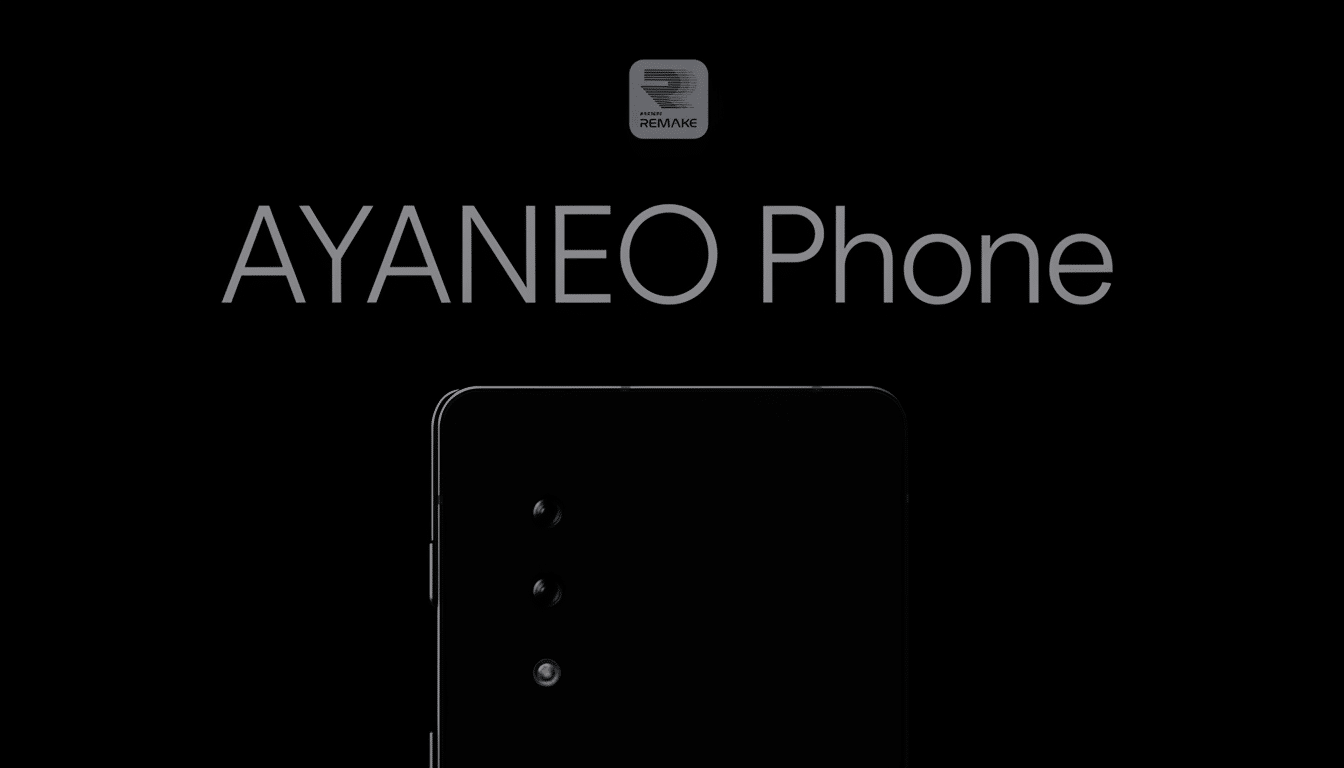AYANEO is taking a huge step away from Windows handhelds and into smartphones. It has revealed its first gaming phone, which it calls a mobile phone with the spirit of a gaming handheld. The little peek just gives a sense of an unusual gaming phone, one that has been developed by a firm more experienced in portable PCs than smartphones.
The video snippet provides a glimpse of the rear with a dual-camera module and what looks like physical shoulder buttons along the spine. The latter detail is important: it is a trademark of unique gaming hardware, allowing for console-like control in landscape mode without compromising on-screen inputs. Earlier hints indicated a slider mechanism similar to traditional slider game phones, but the new footage shows no slide action. Naturally, if this was the standout element then it would likely have been evident, making the ergonomic slab with integrated triggers the more likely option for now.
- Specs remain unconfirmed as AYANEO targets Android gamers
- How AYANEO’s handheld expertise could shape its smartphone
- Competitors and likely specs from established gaming brands
- Key decisions to watch: chipset, cooling, and accessories
- Opportunities and risks for AYANEO’s gaming phone strategy
- What to watch next as AYANEO ramps up its gaming phone

Specs remain unconfirmed as AYANEO targets Android gamers
Apart from that, AYANEO has refrained from giving specs or a release timescale. That modesty implies that the company is cautious with its branding as it approaches a segment of the Android market with a well-established identity.
How AYANEO’s handheld expertise could shape its smartphone
AYANEO’s first and foremost business has been Windows-based gaming handhelds such as the Kun, Air, and Slide. These devices were popular for their ergonomic grips, accurate buttons, and aggressive cooling solutions. In this case, the past suggests a company that might design a phone with actual hardware-first gaming emphasis rather than a regular flagship with some RGB lights attached.
Suppose the teased shoulder keys are programmable and low-latency; in that case, AYANEO could offer a more reliable control layout compared to its competitors, who sometimes employ ultrasonic or capacitive triggers. The company has also proven experience with Hall-effect inputs and layered software launchers on its handhelds. This could imply a robust gaming mode along with per-app performance levels as well as an OS-level control function.
Newzoo’s most recent market outlook claims that approximately 49% of industry revenue is from mobile gaming, the largest chunk of the global games business. That balance has encouraged the top phone brands to introduce gaming characteristics. Still, there is scope to be occupied by a specialist encouraging easier control and defined configurations.
Competitors and likely specs from established gaming brands
Any AYANEO phone will naturally match opponents such as ASUS ROG, RedMagic, and Black Shark, who have prominent gaming lines. These brands usually have the following on their spec sheets:

- Snapdragon 8 series processors
- 120–165Hz AMOLED panels
- Extensive vapor chambers
- 5,000–6,500mAh batteries with 65W to 120W chargers
- Active cooling (fans) and shoulder triggers on certain designs to maintain feasible gaming rates
Key decisions to watch: chipset, cooling, and accessories
Key questions for AYANEO’s entry include which chipset it chooses, what thermal strategy it uses, and whether the company leans into modularity or banks on accessories.
- Chipset choice and performance targets
- Thermal design and sustained performance strategy
- Modularity, clip-on coolers, docks, and other accessories
A clip-on cooler or a dock that mirrors its handheld ecosystem could play to the brand’s strengths. Software polish comes into play as well: a clean, game-focused Android build, low-latency touch, and a scheduler tuned for reliability can be as impactful and less wasteful than raw horsepower.
Camera quality will also prove to be a tell. Most gaming phones have historically opted for compromised imagers, taking the position that imaging quality is in direct competition with thermal headroom and phone balance. A balanced two-camera setup can work in its favor if AYANEO tunes it well, but it could also indicate the company’s priorities are squarely on gameplay and not on the race for the podium of photo quality, which is a smartphone flagship standard.
Opportunities and risks for AYANEO’s gaming phone strategy
The opportunity is one of authenticity. A device with proper shoulder buttons, quality haptics, and a form factor that feels in hand like a handheld could immediately differentiate a device in a field where gaming badges often merely disguise standard hardware. A strong first-party launcher that offers controller mapping and per-game performance profiles could further elevate the experience.
The risks are equally evident. Component costs and small volumes can easily push prices into niche territory. Battery life, weight, and heat dissipation are eternal trade-offs when optimizing for powerful sustained performance. Distribution and after-sales support count, too, as established handset manufacturers have global channels, something a handheld-focused brand would have to build or partner up for. Counterpoint Research analysts have argued that gaming-grade features are gradually seeping into mainstream flagships, a trend that would shrink the differentiation window. To survive, AYANEO will need more than just a spec bump — it will need a hardware-plus-software story that outplays generalist phones in real gameplay.
What to watch next as AYANEO ramps up its gaming phone
Expect more teasers detailing inputs, display refresh rate, and cooling. Certification sightings at regulators often precede launch and can reveal battery capacity and charging speeds. Accessory plans, including grips or docks, would reinforce the handheld ethos AYANEO is promising. For now, the message is simple: AYANEO wants to build a phone for gamers, not just a phone that can game. If the final hardware delivers on those shoulder buttons and pairs them with sustained performance and smart software, this could be one of the more compelling crossovers from the handheld world to Android.

